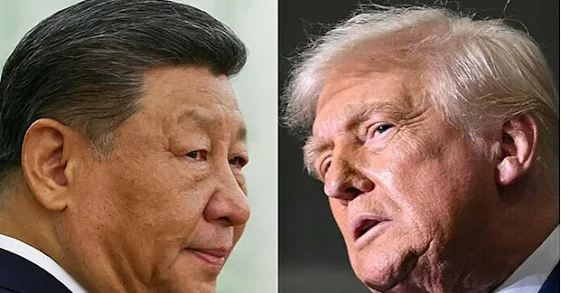Aftermath of the nuclear bomb test on July 16, 1945
At 5:29:45 a.m. on July 16, 1945, a massive fireball abruptly started to ascend from the desert ground of Alamogordo, New Mexico. Initially, it was as radiant as the sun. Shortly thereafter, a rumbling and cracking noise emerged. Its reverberations started to resonate from the nearby mountains.
The detonation instilled a feeling of astonishment and incredulity among a cohort of American scientists and military personnel. The extensive efforts they had invested over a prolonged period in numerous clandestine laboratories across the United States culminated in the successful execution of the explosion test. The atomic bomb was developed as a component of the initiative to conclude World War II.
A new chapter in history was inscribed in the New Mexico desert, USA, on July 16, 1945. On this date, the inaugural test of the atomic bomb took place there. This successful test was carried out by the United States. It marked the first experimental deployment of a lethal nuclear weapon globally. The code name assigned to this test program was 'Trinity'. As a result, the world transitioned into a new era of nuclear armament.
One month following this test, the United States deployed nuclear weapons on Hiroshima, Japan on August 6 and on Nagasaki on August 9. The world observed a novel form of catastrophe.
Self-reflection accompanied by relief
The research team's first response following the atomic bomb test was one of relief due to their success, accompanied by broad smiles. However, they soon became profoundly introspective regarding the creation they had brought into existence.
The immediate supervisor of the testing site was American physicist and Director of the Trinity Project, Kenneth Tompkins Bainbridge. Once the blast wave had subsided, he rose to his feet and extended his congratulations to the project's lead scientist, Robert Oppenheimer.
The initiative carried out by the United States in World War II to create an atomic bomb was known as the Manhattan Project. The principal scientist responsible for the development of that bomb was Robert Oppenheimer.
He collaborated with engineers and physicists to develop a bomb referred to as the 'Gadget'.
Following the nuclear tests, Bainbridge was astonished by its devastating capabilities. He remarked to Oppenheimer, 'Now we are all sons of bitches.'
Oppenheimer referenced a passage from the Bhagavad Gita, stating, "Now I have become Death, the destroyer of the world." Nevertheless, there is no evidence to confirm whether he actually made this statement at that time.
He remembered the event, stating, "Right after the explosion, a gravity enveloped everyone's attitude...as though a sort of quiet stillness, akin to reverence. Nevertheless, they all felt that today we had achieved a significant milestone in human advancement."
The examinations commence at an earlier time.
The journey towards the Trinity test commenced nearly three years prior, in 1942, with the establishment of the 'Manhattan Project' as a collaborative Allied initiative aimed at creating nuclear weapons.
The military leader of the initiative, General Leslie Groves, designated Lawrence to oversee scientific advancements. Lawrence extended an invitation to his colleague Robert Oppenheimer to manage a covert laboratory tasked with addressing technical challenges associated with weapon development.
The primary component in the development of the initial atomic bomb was enriched uranium-235, which was comparatively simple to acquire. The design was referred to as the 'gun design', in which a subcritical U-235 plug was propelled like a bullet into a hollow subcritical U-235 cylinder.
When the two components merged, they would form a supercritical mass, resulting in a significant explosion during the fusion reaction.
The enriched uranium required for this process was manufactured in a facility constructed by Lawrence in Oak Ridge, Tennessee.
However, the production rate was so minimal and sluggish that only sufficient material was gathered to construct a single bomb. Given the straightforward engineering of this bomb, it was deemed unnecessary to conduct a test.
The sole uranium-based bomb was released over Hiroshima on August 6, 1945.
The preferred bomb material for the project was plutonium-239, which had been identified and isolated by Glenn Seaborg at Berkeley. This P-239 could be generated with relative ease in substantial amounts.
The issue was that the material was so fissile that the design of the weapon was not feasible. It would have detonated prematurely before the two components could combine, making the bomb ineffective.
A significant portion of the research conducted at Los Alamos focused on creating a functional plutonium bomb.
They ultimately reached an implosion model, also known as the internal detonation method. The design was such that the plutonium was housed within a hollow subcritical sphere. An explosive, resembling a piece of watermelon rind, was positioned on an outer layer to initiate the detonation.
Which would detonate at the same time, compressing the inner plutonium sphere and forming a solid supercritical mass.
This design was so innovative that there was uncertainty regarding its functionality. It was not even completely understood how much energy it would generate.
A bomb named in honor of the device developed during the Trinity project.
Certain scientists expressed concerns that the explosion might be so intense that it could ignite the atmosphere. While these concerns were subsequently disproven by intricate physics calculations, the ultimate phase in the development of this new bomb was a test known as Trinity.
Assessment location:
Bainbridge selected a secluded region of the desert located approximately 200 miles south of Albuquerque as the location for the test. A few months prior, several temporary huts had been constructed in that area. Everything was prepared for the research there. Physicist Emilio Segre remembers the location as one where clandestine research took place, teeming with scorpions. The research team operated in complete secrecy and faced significant pressure. Their sole focus was on working throughout the day.
The individuals observing this experiment were arguably the most renowned collective of scientists ever gathered for a laboratory experiment in history. Eight among them received Nobel Prizes.Certainly, Oppenheimer was absent from this list. Nevertheless, he was among the most skilled physicists of his era.
The testing facility essentially consisted of a 100-foot-tall steel tower from which the bomb, referred to as the Gadget, was suspended. The central component was transported from Los Alamos under armed protection on July 13 and was elevated into the tower the following day.
The base camp was located approximately 10 miles away from the tower. The vicinity was lively with scientists and dignitaries, many of whom were dispatched to an observation point known as Company Hill, which required a dusty, 10-mile journey taking three hours. At that location, Lawrence encountered several of his colleagues, among them the young physicist Richard Feynman, who was engaged in the analysis of radio waves.
The day prior to the atomic bomb test, dense clouds gathered over the Trinity test site. A storm commenced. The test has been rescheduled from 4 a.m. to 5:30 a.m. because of the storm. In the meantime, observers engaged in betting on the intensity of the explosion. They applied suntan lotion to their faces and adjusted their goggles for safety.
The test has been rescheduled from 4 a.m. to 5:30 a.m. because of the storm. In the meantime, observers engaged in betting on the intensity of the explosion. They applied suntan lotion to their faces and adjusted their goggles for safety. Observers stationed at the base camp were directed to lie prone, orient their feet towards the tower, and shield their eyes with their hands to safeguard themselves from the detrimental impacts of the explosion.
General Groves remembered, "We encountered uncertainties that surpassed human experience and understanding. We could only speculate on what could occur."
Robert Oppenheimer (left) and General Leslie Groves, who led the Manhattan Project, are positioned beside the remnants of the 100-foot-tall tower at the Trinity Test Site, where the experimental bomb was situated.
Count down Start
During President Truman's discussions with British Prime Minister Winston Churchill and Soviet leader Joseph Stalin in Potsdam, located near Berlin, he was informed that the test of the atomic bomb had been successful.Truman subsequently remembered informing Stalin, "We possess a new kind of weapon with remarkable destructive capability."
Stalin merely responded, "That is reassuring to hear. I trust you will utilize it effectively against the Japanese."
Following the conclusion of the war, Oppenheimer initiated a campaign aimed at placing nuclear technology under international oversight; however, this effort faltered with the onset of the fraught Cold War between the Western nations and the Soviet Union. Nevertheless, as time progressed, the alarming truth of their accomplishment began to dawn on society. This awareness intensified when President Truman opted to commence a project focused on the development of a hydrogen bomb. This choice resulted in a schism within the physicist community.
The moral implications of participation in the Manhattan Project started to be scrutinized. Yet, during that period, the primary objective for all was to vanquish Hitler, particularly to be the first to create the atomic bomb to prevent it from falling into his hands. Ultimately, it was revealed that Hitler was incapable of attaining such power. Nonetheless, the concerns that Oppenheimer had previously expressed gradually materialized—a succession of dreadfully potent weapons was being manufactured without regulation. The rivalry to create these arms began to taint international relations. This situation persists, rendering the future of humanity increasingly precarious and uncertain.















.jpg)










